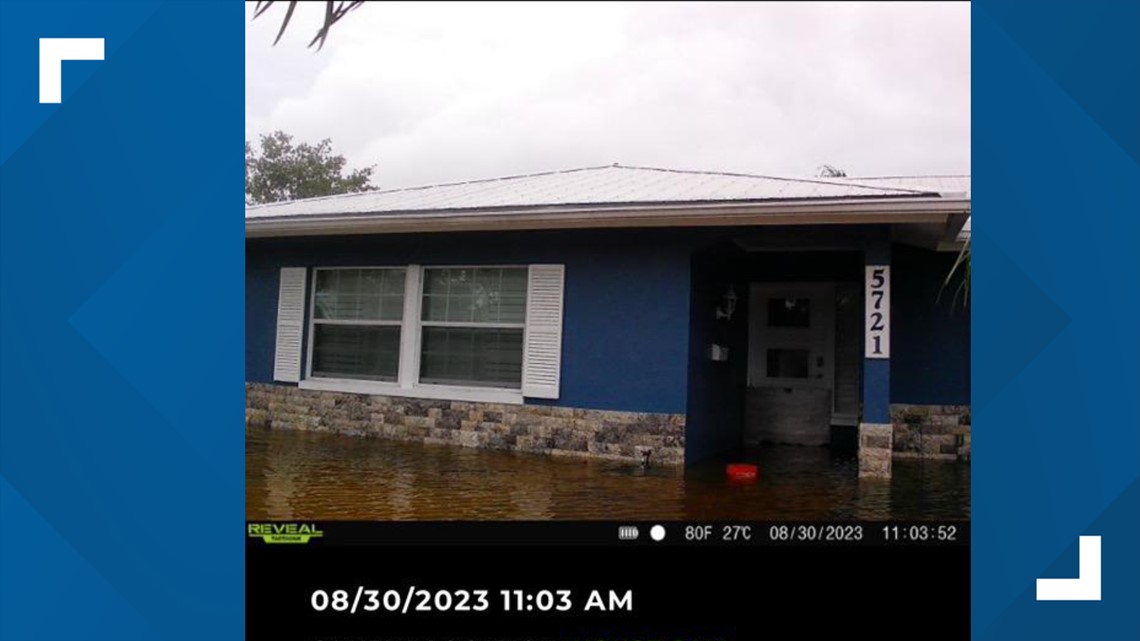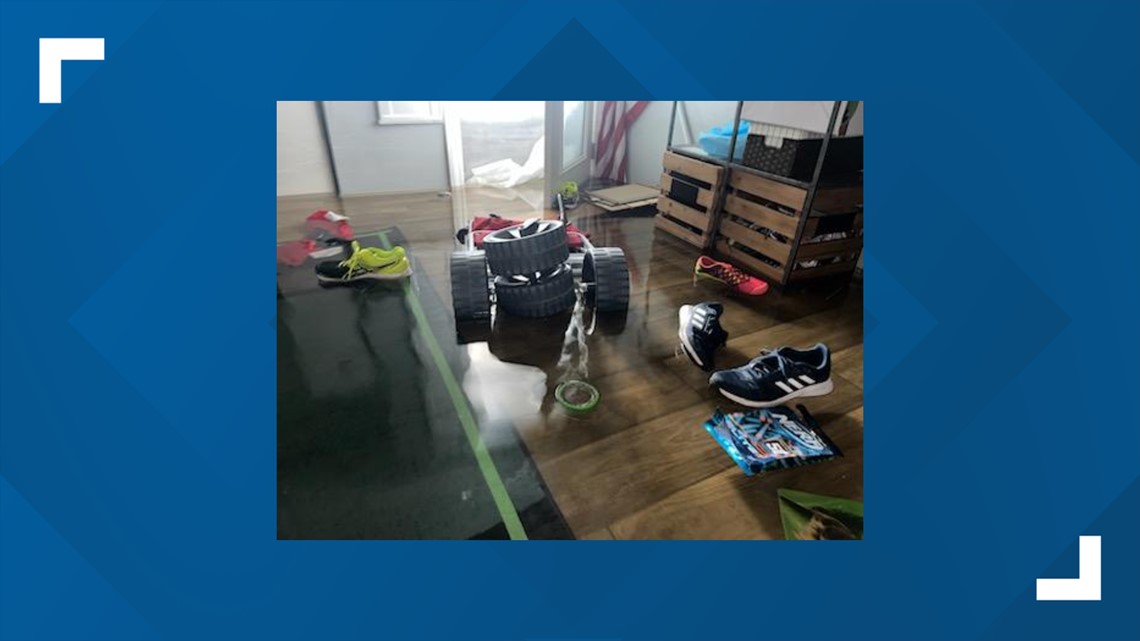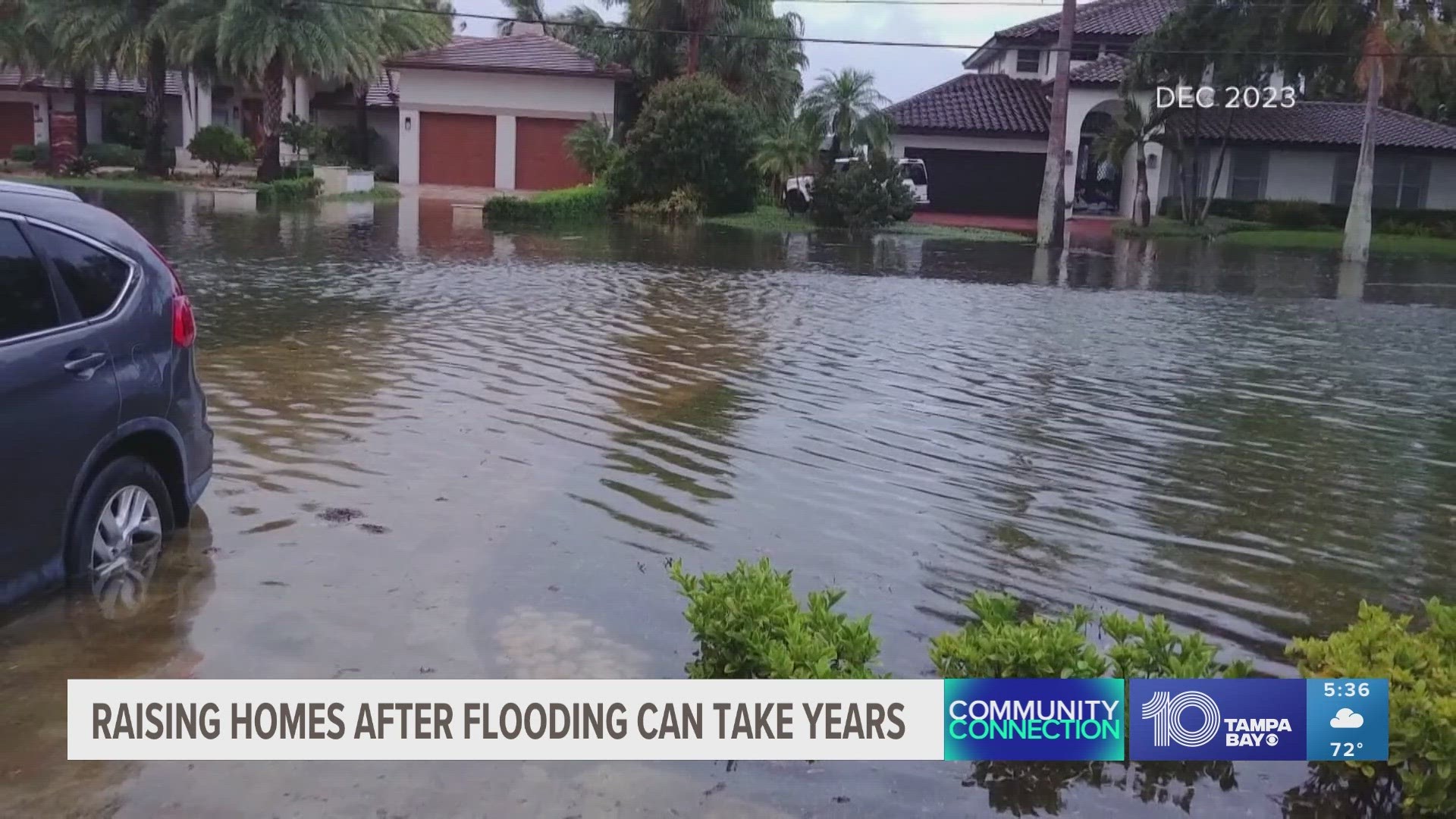SAINT PETERSBURG, Fla — People love living in this northeast St. Petersburg community, mostly because of its proximity to the bay, but that can also be problematic.
Shore Acres is known to flood and flood badly.
The city has been holding meetings with the community and letting them know there are options to help keep their property dry. But those options come at a major cost.
Shore Acres is the lowest-lying neighborhood in St. Petersburg, developed in the 1920s before city standards were implemented. When standards were finally put in place in the 1950s, builders often ignored elevation recommendations, leaving people now to decide to elevate the home themselves which could mean time and red tape.


Meghan Martin showed 10 Investigates the water line outside her home. She says last year, Hurricane Idalia put six inches of water in their home. In the past three years, Martin says her family’s home has flooded not once, but twice.
“It's a punch in the stomach. And it was it hurt emotionally to know that we were going through this process again so soon after the first one and then replacing all of the stuff and the cabinets in the kitchen,” Martin said.


It’s why the Martins and so many of their neighbors who don’t want to leave the community know they need a solution to the water problem.
“The city brought (Federal Emergency Management Agency) FEMA in to talk about the grant options, and we've talked about raising it to protect ourselves from floods because realistically, there's not much other mitigation options available,” Martin said.
FEMA’s program to raise a home falls under the agency’s flood mitigation assistance grant, and as 10 investigates has uncovered, it’s a lengthy application process.
First, the homeowner has to apply through their local government. Then, the approved applications go to the Florida Department of Emergency Management, and if approved there, the application then makes its way to FEMA.


“That process could take a year, it could take up to two or three years depending upon the complexity of the projects that they're submitting in within that state's entire application, FEMA Supervisory Grants Management Specialist Sabrina Simms said. “So it's a process, I think that's the biggest thing we hear from people that are like, we just went and did it ourselves and paid for our own raise, because it just takes way too long to hear whether or not we've been approved. It is a process and the timeline, again, varies by project type.”
10 Investigates obtained data from the city of St. Petersburg that shows nine homes have been brought into compliance by elevating or tearing down and building new construction. A homeowner located down the street from the Martins was awarded the grant in 2020 and is just now in the process of raising the home. It’s that timeline that led the Martins to decide to pay to raise their home themselves.
“The house is going to go all the way up. It'll be 12 feet high, so there'll be enough space underneath that. We can put a garage and storage space,” Martin said.
She says it will cost around $250,000, but the family thinks it’s worth it because, with hurricane season just months away, time is of the essence.
“We got to get it done. Yeah, it just needs to happen at this point because if we don't, we're going to do it again,” Martin said.
The reason why the community is focusing on raising homes in Shore Acres is because they can’t raise roads before they raise structures. If they did the roads first that would lead to even more flooding.
In 2023, four homeowners applied for the grant in St. Pete and the state just recently passed their applications to FEMA last month. Senator Nick DiCeglie represents District 18 which includes St. Petersburg. He has been looking into the mitigation efforts and sent us this statement:
"Our office is closely monitoring the flooding issues in Shore Acres. We were happy to see that the St. Pete City Council recently dedicated almost $750,000 to replacing 14 backflow prevents in Shore Acres. This is a great first step. I have had preliminary discussions with state emergency managers about the FEMA program to raise homes in flood-prone areas. I think we have made some progress and will continue to work with them over the summer to find ways to streamline access to these programs so that residents in need can have quick access to them."
According to the National Institute of Building Sciences, for every $1 of federal funding invested in mitigation, it saves $6 in future disaster costs.
If you’re interested in learning more about FEMA’s flood mitigation efforts, click here.
The Florida Division of Emergency Management (FDEM) is taking applications for the Hazard Mitigation Grant Program (HMGP) funds as a result of the Presidential Disaster Declaration for Hurricane Idalia (FEMA 4734-DR-FL), which was declared on Aug. 31, 2023. The application period closes on April 30, 2024. You can learn more about the program here.

